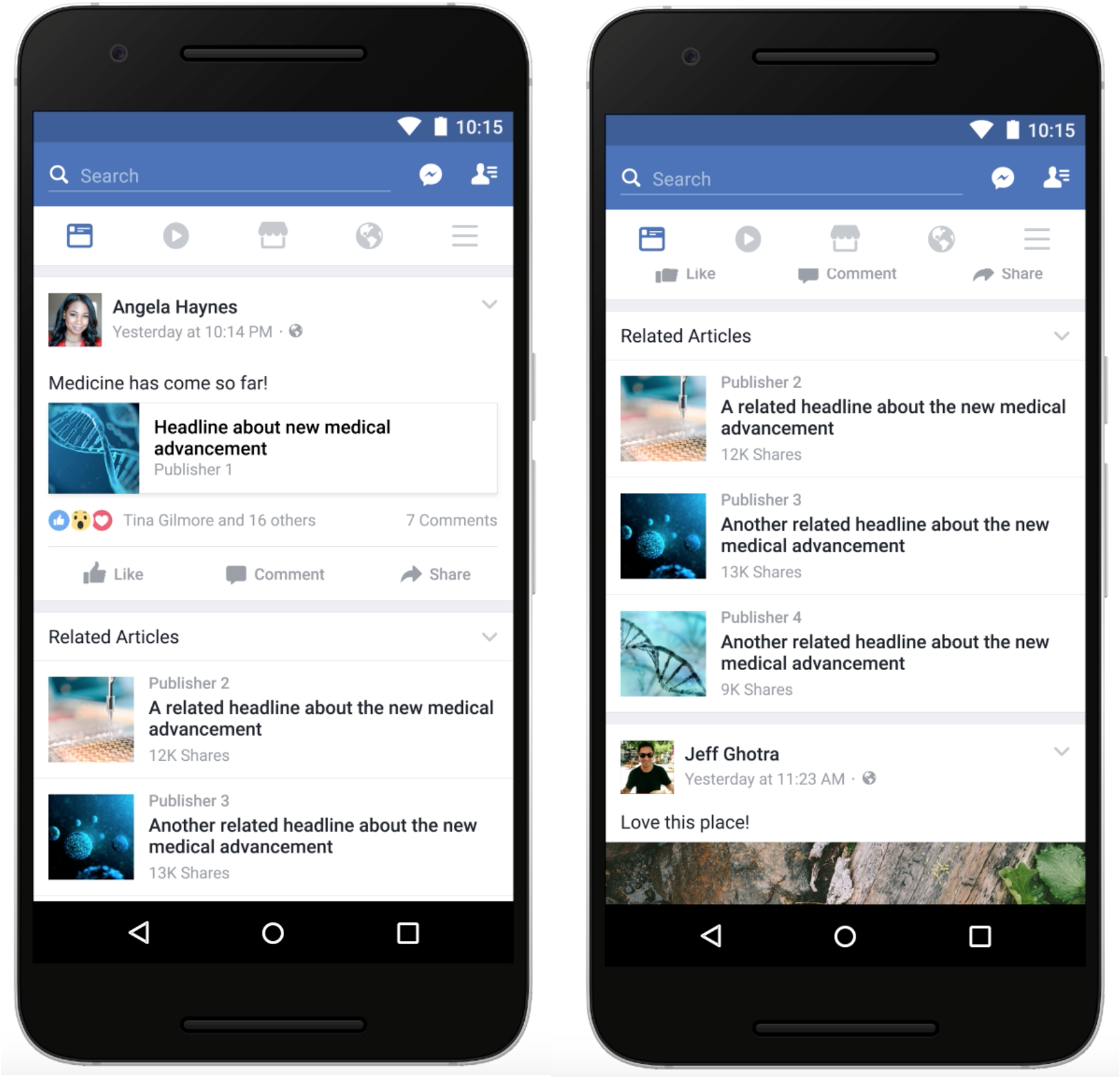7
Petra Perrault, Nick Mahabir, Rebecca Gauthier, Tom Geiseke
Due to the fact that fake news has become such a problem in our society and practically anyone can create it, we were curious to know who fights it. We found multiple different ways association’s fights fake news starting with the social media powerhouse, Facebook.
Facebook has set up positions within their company specifically to combat the spread of false information. This is referred to as the Newsfeed integrity team. They have improved a pre-existing algorithm to seek out false information and articles, once a piece of info is deemed questionable it is sent to fact checkers that Facebook has partnered with and evaluated and that evaluation is put on the article on facebook. Another issue is your bias bubble where you have one view and the algorithms catch on to that and give you articles that agree with your beliefs. Facebook combats this by using a related articles page which has articles on the same topic but from completely separate viewpoints which helps a user get the full story.

Libraries across America have also been stepping up to fight fake news. Developed at the Meriam Library of CSU Chico (2010), the CRAAP Test is a checklist for evaluating sources based on a series of criteria: currency, relevance, authority, accuracy, and purpose (C.R.A.A.P.). Each step of this list contains questions to help patrons determine whether a source is trustworthy. In a classroom setting, librarians can distribute the checklist to the students and ask them to evaluate an internet source or determine which of two provided sources is more valid. Outside of the classroom, the CRAAP test is an invaluable resource for assisting patrons with research questions.

Tips to Ensure Reliable News
- Examine the author and the sponsors
- Check for source reliability
- Look at the time and place of the story
- Consider emotions evoked
- Technology overload
Fact Checking is a process on which they would find articles and to systematically check if the information provided is true or false. The most common form of this system is through websites and some publications in newspapers.
Most fact-checking sites mostly start off by looking for any news statement and they usually ask: these questions
Is the statement Verifiable?
Could the statement be misleading?
Is it significant in the news?
Could it be spread easily?
If someone sees the statement, will the person wonder: is it true?
Many sites like Politifact always tries to make sure that there is no bias as much as possible. Though that is very difficult to do. Like other news sources, they use other sources to show where they got the judgment in the article. Some make it simple like Politifact which uses a graphical meter to show if it is fake or not in various degrees or some with a worded statement from Reuters. Some can make mistakes with their fact checking, if that is the case, try to search it yourself, or try to report it to the site makers themselves to correct it. There are community-reviewed fact sites like Digipo which anyone can give results about the process they used to fact check.
Works Cited
https://tctechcrunch2011.files.wordpress.com/2017/04/related-articles-facebook.png
http://www.emeraldinsight.com.libproxy.plymouth.edu/doi/pdfplus/10.1108/RSR-03-2017-0006
http://scad.libguides.com/c.php?g=164805&p=1316087
https://techcrunch.com/2017/10/05/facebook-article-information-button/
